- Administrator
- Albums and Singles
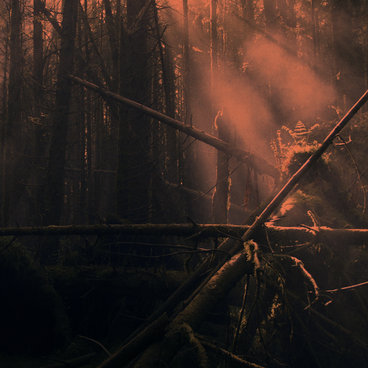
On June 5th, Subtext presents Kistvaen – the fourth solo studio LP by Roly Porter – which takes its name from a type of granite tomb found predominantly in Dartmoor, southwestern England. Scattered across the moorlands, the kistvaens were often found covered in a mound of earth and stone. They housed dead bodies, allowing them to lie facing the sun.
With Kistvaen, Porter speculates on the burial site as a mirror, or a gate in time. Excavating stories and images of ancient burial rituals, the record teases out similarities in emotional and social rituals between the Neolithic period and today. While a myriad of social, cultural and technological factors drastically differentiate our contemporary period and the end of the Stone Age, certain affinities may still be found in experiences of death across eras.
Venturing across histories, Porter soundtracks a moorland burial unanchored in time. Raw, unprocessed vocals are folded into field recordings made in the area, wordlessly relaying tableaus of burial rituals in Neolithic Dartmoor. Kistvaen features three singular vocalists: Mary-Anne Roberts – from medieval Welsh music duo Bragod, Ellen Southern – of Bristol's Dead Space Chamber Music group, and Phil Owen – a singer and researcher in vocal traditions.
Kistvaen contrasts primordial motifs with that of the 21st-century life in designed environments and an evolving virtual existence. The music blurs boundaries between field recording, folk instrumentation and digital processing, which although beatless creates a profound effect using dark ambiance, deep electronics, and immersive sound design. This is otherworldly sonic necromancy, where long dormant spirits are evoked, summoning an extremely heavy presence.
The pieces that comprise Kistvaen were developed for an AV performance of the same name with visual artist MFO, which has appeared at Unsound, Berlin Atonal, and Sonic Acts. The long-player was recorded during various rehearsals/performances and also at BinkBonk studios in Bristol.
More information can be found here.
Read More
- Administrator
- Albums and Singles

For many centuries Indonesia, from the Malay Peninsula throughout the vast archipelago, has been subjected to successive foreign cultural invasions which have left their deep imprint on the indigenous way of life. Among the first was the Mongolian intrusion from central Asia. A later cultural wave came from India when Hindu merchants and immigrants introduced Hinduism and Buddhism into the islands. Subsequently, about the 13th century A.D. Islamic influences penetrated the archipelago. Finally in the 16th century, Western culture and Christianity came into the picture. Although, after four centuries, Western civilization has by no means superseded the Islamic hold on Indonesia (90% of the population are Muslims), it has already reshaped the outward appearance of Indonesia life to a considerably extent. The cultural diversity is naturally reflected in the music.
In the current globalized and digital communications-dominated era, influences from the Western world become more and more evident, in everyday life , as well in popular art and music from Indonesia. But listening to the tracks included in this compilation presented by Unexplained Sounds Group, you’ll discover how traditional Indonesian music, even in its more 'primitive' forms, as well in the very elaborate and developed ones from Javanese and Balinese tradition, are still very much recognizable. The current mix of influences in the experimental and avant-garde music from this region has resulted in an extremely fascinating kaleidoscope of sounds.
More information can be found here.
Read More
- Administrator
- Albums and Singles
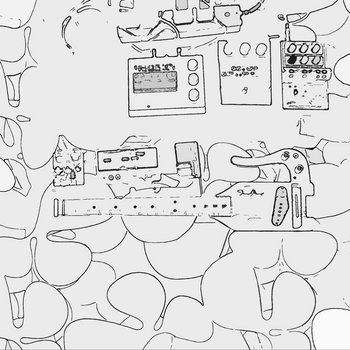
A humble compendium of guitar music from across nine separate compilations & regional issues, including pieces from the Tu M'p3 web-series, the E • A • D • G • B • E disc on 12k (along with an earlier, shorter version of the same), the 2nd Early Monolith business-card disc on Twisted Knister (available briefly in a cigarette vending machine in Bremen ca. 2005), the Brainwaves compilation on Brainwashed, the I Don't Think The Dirt Belongs To The Grass boxed set on Carbon, the Idioscapes on Idiosyncratics (plus a completely different alternate take), an unrealized Bodies of Water Arts & Crafts fundraiser-set, the Fabrique disc on Room40 (plus an alternate, separate piece recorded at the same time, never issued), and finally the Beaterblocker #2 compilation.
More information can be found here.
Read More
- Administrator
- Albums and Singles
 I was legitimately blindsided by Clarice Jensen's wonderful 2018 debut (For This From That Will Be Filled), but it left me with absolutely no idea what to expect from her in the future, as it was an unusual collection consisting of a collaboration, an ambitious solo composition, and a piece composed by Michael Harrison. As such, it was hard to tell if Jensen was a brilliant cellist with great taste, an extremely promising composer, or both. With the spellbinding The Experience of Repetition as Death, Jensen definitively confirms that she is indeed both, as she ingeniously employs loops and effects to craft a beguiling, varied, and richly textured five-song suite inspired by personal tragedy, Freud, and Adrienne Rich. Though death is a definite and deliberate theme, Jensen transforms it into something sublime, transcendent, and achingly beautiful. Moreover, the album's mesmerizing centerpiece ("Holy Mother") completely decimates any preexisting conceptions I had regarding what one person can achieve with a cello.
I was legitimately blindsided by Clarice Jensen's wonderful 2018 debut (For This From That Will Be Filled), but it left me with absolutely no idea what to expect from her in the future, as it was an unusual collection consisting of a collaboration, an ambitious solo composition, and a piece composed by Michael Harrison. As such, it was hard to tell if Jensen was a brilliant cellist with great taste, an extremely promising composer, or both. With the spellbinding The Experience of Repetition as Death, Jensen definitively confirms that she is indeed both, as she ingeniously employs loops and effects to craft a beguiling, varied, and richly textured five-song suite inspired by personal tragedy, Freud, and Adrienne Rich. Though death is a definite and deliberate theme, Jensen transforms it into something sublime, transcendent, and achingly beautiful. Moreover, the album's mesmerizing centerpiece ("Holy Mother") completely decimates any preexisting conceptions I had regarding what one person can achieve with a cello.
The title of this album is lovingly borrowed from Adrienne Rich's "A Valediction Forbidding Mourning," as Jensen has a deep admiration for Rich and her work and that particular poem holds deep personal meaning for her.However, it was actually Freud's writings about the death drive that indirectly led to the unusual conceptual framework of this album, as Jensen was fascinated by his thoughts about the "compulsion to repeat self-destructive behaviors or re-live traumatic events."Unsurprisingly, that got Jensen thinking a lot about how to break out of the repetitive nature of our existence.Needless to say, it is not hard to see how such thoughts might have immediate practical applications for an artist whose work is largely loop-based by necessity.In essence, Jensen set out to disrupt and transcend familiar patterns in order to subvert a creative death drive (or, at least, a creative stagnation drive).The most immediately graspable and overt evidence of Jensen's clever escape from the prison of repetition lies in the album's gorgeous bookends: "Daily" and "Final."In the opening "Daily," a warmly melodic cello theme languorously unfolds over a bed of drones, gradually blossoming into a more complex crescendo of overlapping loops.It all feels quite seamless and sensuous, yet the theme is actually "fragmented into three different tape loops and never expressed fully in order."On the closing "Final," those same loops are revisited in degraded and disrupted form until they are finally allowed to converge into a rapturous finale in which four separate loops unite in achingly lovely harmony.
While both of those pieces are absolutely gorgeous, the three pieces that lie between them offer a more varied array of pleasures.Notably, the first of the trio ("Day Tonight") is yet another variation on the same loops used in "Daily" and "Final," albeit an unrecognizably extreme one.According to Jensen, the theme is presented in an "unfamiliar key," but it also seems like it has been time-stretched until it is essentially a drone piece (it is twice as long as the other two pieces made from the same material).Eventually, however, it builds to a half-fluttering/half-stammering crescendo of sorts that calls to mind classic minimalism à la Steve Reich.The following "Metastable" is yet another drone-based piece, but it coheres into a bass-heavy and queasily see-sawing pulse of organ-like chords that were inspired by the omnipresent rhythmic beeping of hospital wards.It is interesting both rhythmically and texturally, but it does not have enough of a melodic or harmonic component to leave a deep impression.That is not true of "Holy Mother," however, which resembles nothing less than a roiling, endlessly shifting, and downright apocalyptic organ mass.While intermittent surges of rumbling low-end admittedly imbue the piece with a seismic intensity, Jensen nevertheless pulls off a nimble balancing act between light and darkness, as the organ-like tones dance and flicker like sunlight through a stained glass window.Aside from being a visceral tour de force, "Holy Mother" is quite striking in how dramatically Jensen is able to alter the sound of her cello, as she employs an array of effects to alternately transform her bowed strings into a glimmering nimbus of overtones and a mass chorus of deep voices.She also pulls off a neat trick at the end where the attack disappears to leave only the spectral reverberations (which then disappear as well to leave behind a wake of shivering feedback or overtones).
I suppose the only thing preventing me from declaring that The Experience of Repetition in Death is a start-to-finish masterpiece is the fact that the more experimental pieces ("Day to Night" and "Metastable") feel like a bit of an extended lull compared to the more melodic and emotionally resonant pieces that come before and after.It seems crazy to lament the fact that the album is not an uninterrupted parade of career-defining triumphs though, as three brilliant pieces out of five is more than enough to make me fall completely in love with this album: the high points are extremely high indeed.Unsurprisingly, it was the intensity and bold vision of the epic "Holy Mother" that first grabbed (and held) my attention, but after listening to the album on headphones a few times, I became convinced that "Daily" and "Final" are Jensen's most towering achievements to date.Both pieces are an absolute master class in both composition and performance, as each is warm, poignant, and beautifully melodic on their face and both make masterful use of looping.With closer listening, however, they reveal themselves to be significantly more than they first appear, as the elegant interplay of the loops and the shimmering accumulation of quivering overtones in their wake reach a level of sublime brilliance that I rarely, if ever, encounter (despite some very diligent searching on my part).With those two pieces, Jensen masks the complex within the simple and makes it all seem effortless and perfectly natural.To my ears, those thirteen minutes alone are more than enough to ensure that The Experience of Repetition in Death will be one of the albums that leaves the deepest and most long-lasting impact on me this year.Clarice Jensen is one seriously formidable artist.
Samples can be found here.
Read More
- Administrator
- Albums and Singles
 This latest release from Félicia Atkinson is ostensibly a minor and somewhat transitional one, as it is a cassette intended as a sort of culminating document of a year spent traveling and performing. As with all recent Atkinson releases, however, the reality is far more complex, enigmatic, and deeply conceptual than anything that can be easily summarized in just one sentence. Partly inspired by the paintings of Helen Frankenthaler and partly intended as "a reassessed document of public performance with improvised studio interventions acting to break the linear stream of the live-on-stage temporality," Everything Evaporate is an intriguing and sophisticated release that seems to exist at the borderline of form and dreamlike abstraction. As such, it is not the optimal entry point for the curious (that would be 2019's The Flower and the Vessel), but deep listening reveals this release to be every bit as absorbing as the rest of Atkinson's recent hot streak.
This latest release from Félicia Atkinson is ostensibly a minor and somewhat transitional one, as it is a cassette intended as a sort of culminating document of a year spent traveling and performing. As with all recent Atkinson releases, however, the reality is far more complex, enigmatic, and deeply conceptual than anything that can be easily summarized in just one sentence. Partly inspired by the paintings of Helen Frankenthaler and partly intended as "a reassessed document of public performance with improvised studio interventions acting to break the linear stream of the live-on-stage temporality," Everything Evaporate is an intriguing and sophisticated release that seems to exist at the borderline of form and dreamlike abstraction. As such, it is not the optimal entry point for the curious (that would be 2019's The Flower and the Vessel), but deep listening reveals this release to be every bit as absorbing as the rest of Atkinson's recent hot streak.
For the most part, Everything Evaporate is an remarkably apt title for this release, as several of these songs sound like they are heeding that command in real-time.On the opening title piece, however, Atkinson largely picks up exactly where she left off with The Flower and the Vessel.Granted, it is a bit more minimal than usual, as Atkinson's breathy monologue unfolds over an oscillating and gently heaving bed of droning bass tones.Her seductively accented voice remains sharply in focus though, so the heart of the piece is an mysterious, poetic, and evocative spoken word performance.At this stage in her career, Atkinson’s ASMR-influenced narratives are very much the strongest and most instantly recognizable feature of her work, as she manages to make even mundane phrases like "can I get a cup of coffee please?" seem pregnant with deep hidden meaning.While her voice is unquestionably the center of everything, however, there are plenty of unpredictable other factors driving and shaping Atkinson’s recent work, as she seems to draw a significant amount of inspiration from both literature and visual art.And, of course, those "outside" influences rarely manifest themselves in expected or conventional ways.The following instrumental "I can't stop thinking about it" is a prime example of how those disparate threads converge, as Atkinson conjures up a surreal miasma of plinking marimbas, chirping birds, and spectral drones. At first, it all feels like a lazily clinking, disjointed, and formless haze, but the drones sneakily increase in richness and intensity for a shimmering and dreamlike crescendo.Notably, that piece also contains an excerpted fragment of a Helen Frankenthaler interview that recounts how she ruined a painting by messing with its fragile ambiguity.While that recording makes up a very small part of the album, its sentiment seems to be the guiding force at the heart of Everything Evaporate.I suspect Atkinson was being quite sincere when she titled the piece "I can't stop thinking about it."
The next piece, "Transparent, in movement," continues to explore that same hazy, impressionistic, and erratically plinking aesthetic, but Atkinson's voice returns for another cryptic monologue and the piece gradually converges into a slow, stumbling rhythm of sorts.Naturally, that alone is enough to make it a stronger piece.However, that is arguably just the piece's backbone, as a hallucinatory swirl of peripheral sounds blossoms outwards as the piece progresses towards an eerie finale of darkly twinkling piano.The following "Don't Assume" opens as yet another spectral haze of blurred drones and disjointed marimba plinks, but they are bolstered by an ascending roar of more visceral, metallic tones this time around.The piece admittedly takes a while to catch fire, yet it is worth the wait, as it eventually opens up into a genuinely creepy crescendo of overlapping, pitch-shifted voices and snatches of sinister-sounding sing-song melody.It feels like I am eavesdropping on a group of dead-eyed, possessed children joining together for either an occult incantation or a distracted performance of a macabre nursery rhyme.That late-album descent into darker territory continues into the closing (and ominously titled) "This is the gate," as an insistent harp-like chord obsessively repeats over a phantasmagoric mélange of floating feedback-like tones and murky smears of metallic chimes.Gradually, form emerges as rippling piano arpeggios overlap and the underlying metallic shimmer converges into a loose pulse of sorts.By the final moments, it actually blossoms into something quite beautiful as Atkinson's buried voice murmurs beneath some tender, lingering chords and a warm, all-enveloping hiss.
Those final two pieces are my favorite ones on the album and rank among some of Atkinson's finest work, particularly "Don't Assume."That said, "This is the gate" is probably Everything Evaporate's most radical creative breakthrough—or at least the most successful incarnation of the aesthetic evolution that runs throughout much of the album.More than any other piece, "This is the gate" evokes an absorbing and gently hallucinatory state of suspended animation, as Atkinson creates the illusion that all of the instrumentation is floating, decontextualized, and untethered to any structure.Then, she begins subtly sliding each piece into place until her lazily lingering tones converge into a warm web of rippling harmonies engulfed in a comforting sea of hiss.That is not a far cry from what happens elsewhere on the album, however, as the biggest difference is only that other songs achieve a similar sleight of hand by transforming disjointed percussive instruments into richly layered drones.As a result, Everything Evaporate is an especially rewarding album for focused listening, as it is a delight to hear Atkinson pull metaphorical rabbit after rabbit out of her hat, subtly and surreptitiously transforming her hyper-minimal palette of misused marimbas and a voice into pieces of impressive depth and mystery.
Samples can be found here.
Read More
- Administrator
- Albums and Singles
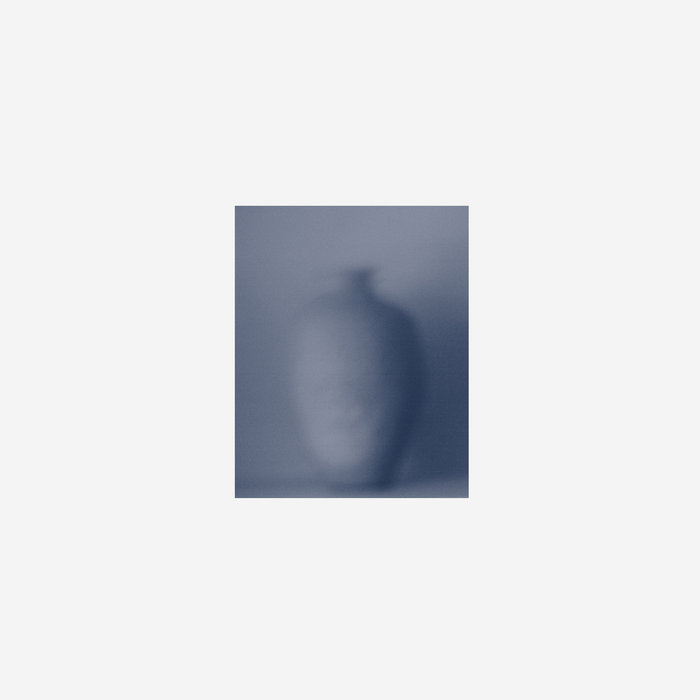 Beatriz Ferreyra, former pupil of Gorgy Ligeti, is an experimental music composer with many distinguished accolades. An academic who has published notable papers, she now works as a free composer taking commissions for concerts, festivals, ballets, and films. On Echos+, we hear her in peak form crafting intriguing and unique experiments in vocal manipulation. She uses the voice as base material for stereo-shifting computer music creations that arrest and delight.
Beatriz Ferreyra, former pupil of Gorgy Ligeti, is an experimental music composer with many distinguished accolades. An academic who has published notable papers, she now works as a free composer taking commissions for concerts, festivals, ballets, and films. On Echos+, we hear her in peak form crafting intriguing and unique experiments in vocal manipulation. She uses the voice as base material for stereo-shifting computer music creations that arrest and delight.
Room 40
The album is split into three pieces that are entirely different in character. The first piece, "Echos,"is a wildly inventive chorus of sampled vocalizations and spoken phrases, drawn together in a patch quilt symphony built entirely of the human voice. This is not just a simple stringing together of voice recordings like Christmas lights; it is an incredibly dynamic nine minute song with sudden stops and crescendos and palpable vibrancy. Words fail to describe the surprising results, a meticulously built, sonorous joy to listen to.
The second piece, "L'autre ... ou le chant des Marecages," where the word chant could be translated as 'song' but actually more accurately describes the piece when translated as the cognate 'chant.' It opens with strong imagery of Gregorian chant, then takes a turn for the more mysterious with sound manipulations that evoke horror and alarm. Again, the principal texture here is the human voice.
The third and final piece, "L'autre rive," apparently departs from vocal sample as instrument, though it is difficult to tell what the source samples are for these electronic machinations. Full of action and punch, it does not rest long on an idea. Percussion adds a strong element of drama, making this conclusion feel like a film score for the jungle.
Echos+ is a masterwork of a composer who is well versed in her tools and patient enough to imbue her creation with unlimited subtlety and detail, and I have thoroughly enjoyed it.
Read More
- Administrator
- Albums and Singles
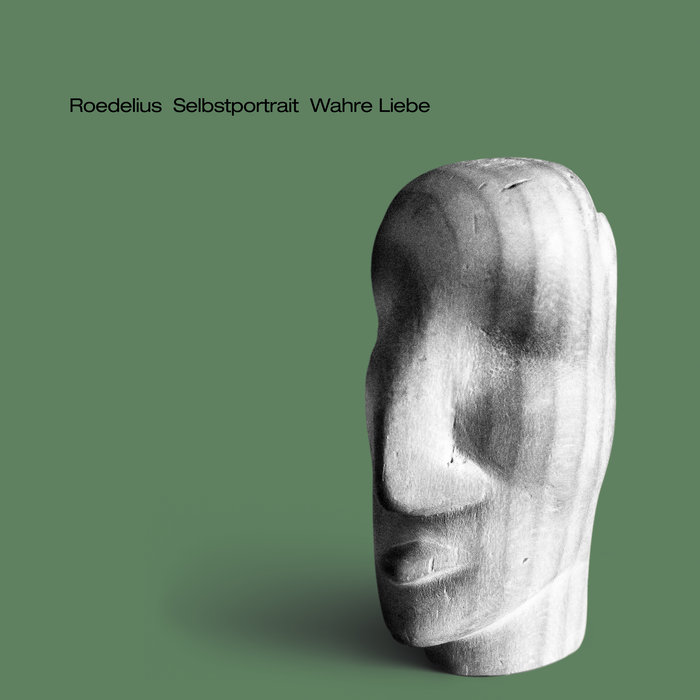 Hans-Joachim Roedelius is better known for his work as a founding member of the bands Cluster and Harmonia, both household names for fans of 1970s krautrock. This solo album, Selbstportrait Wahre Liebe, feels like a more clinical approach to krautrock, with all of the difference and repetition and none of the bombast. Filled with stately electronic keyboards and synthesizers, this minimalist document has the hair-raising effect of a calm, deliberate tea ceremony.
Hans-Joachim Roedelius is better known for his work as a founding member of the bands Cluster and Harmonia, both household names for fans of 1970s krautrock. This solo album, Selbstportrait Wahre Liebe, feels like a more clinical approach to krautrock, with all of the difference and repetition and none of the bombast. Filled with stately electronic keyboards and synthesizers, this minimalist document has the hair-raising effect of a calm, deliberate tea ceremony.
Bureau B
The opening piece, "Spiel im Wind," is a shifting kaleidoscope of small repetitive figures, like an avant-garde song in the round. "Wahre Liebe," translation "true love," is a piano led piece that unfolds like a poem, in a meandering stream of thoughts both beautiful and unsettling. "Winterlicht," loosens the formalism of earlier tracks and explores a duet like an open conversation, with pauses for contemplation. "Nahwärme" has many layers of sound, with the principal piano voices subsumed by ambience that lifts the curtains to let the sunshine in. "Gerne" conjures the spirit of Steve Reich with its propulsion in repetition, and interlocking pieces moving like the gears on a steam engine.
The tone remains consistent throughout the album. It is engaging enough to place full attention on while still having the quietude of a soundtrack to a slideshow film. Fans of krautrock, minimalist composition, and even some post rock will find this album engrossing.
Read More
- Administrator
- Albums and Singles
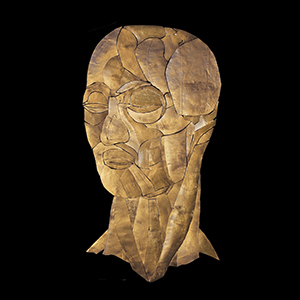 Euzebio is Robert Piotrowicz's first record of solely modular synthesis after a period of working within different contexts. The recent Crackfinder was a collaboration with Jérôme Noetinger and Anna Zaradny, and Walser was a film soundtrack, so there has not been a "pure" Piotrowicz record for a while. It is obvious, however, that he has not lost his way when it comes to his preferred instrument. Again he coaxes some of the most varied sounds yet from his bank of electronics (in this case Buchla and EMS synthesizers), and focuses not just on the noisier characteristics of his previous works, but also some more traditional, rhythmic structures to vary things nicely.
Euzebio is Robert Piotrowicz's first record of solely modular synthesis after a period of working within different contexts. The recent Crackfinder was a collaboration with Jérôme Noetinger and Anna Zaradny, and Walser was a film soundtrack, so there has not been a "pure" Piotrowicz record for a while. It is obvious, however, that he has not lost his way when it comes to his preferred instrument. Again he coaxes some of the most varied sounds yet from his bank of electronics (in this case Buchla and EMS synthesizers), and focuses not just on the noisier characteristics of his previous works, but also some more traditional, rhythmic structures to vary things nicely.
Like a lot of work centered on modular synthesizers, there is an extremely kinetic feel throughout all five compositions on this record, but even with all the chaos, there is a distinct sense of composition and structure."Euzo Found Guitar," for example, is a swerving ball of inorganic guitar sounds and dramatic, synthetic string scrapes for its opening, complex and multilayered.However, it is not long before he shifts things to a rhythmic, almost skeletal techno sound before closing things up on a tense, forceful note.
The same hints at traditional structure can be heard on "Elektros Spong" as well.Opening with an amazing approximation of pummeling drum sounds, Piotrowicz injects an array of jerky, erratic synth sequences that on the surface sound like pure entropy, but instead reveal a multitude of organized, interlocking sections.He transitions from heavy to skittering drum sounds and low bit rate synth layers before closing things out on a satisfyingly disjointed note.He utilizes a bit of everything on "To Fleh," opening from sputtering laser beams and big dramatic synth swells into faux birdcalls and chiming bells.In many ways it reflects his soundtrack work, as there are all the big, dramatic stings of an action movie trailer, but far too varied and nuanced to work in that capacity.
Intensity largely reigns supreme throughout Euzebio, but there are of course moments where the album relents.There may be some wet synth thuds throughout "Flares Et Wasser Hole," but resonant bell tones and carefully constructed melodic fragments are more at the forefront.Closing piece "Ocarina Wars" makes for the perfect conclusion to the record.Opening with a dense wall of malfunctioning 1970s computer mainframes, he throws in a healthy selection of laser bursts and mangled synth leads.There is also the occasional synth thud that, the way it is used, could almost herald the opening of a thumping techno track, but he never allows it to get off the ground.
Even when Robert Piotrowicz was deep in purely synth records, he always had a knack for balancing the unpredictability of what miles of patch cables can do with a composer’s sense of construction and dynamics.It would seem his collaborations and soundtrack work have further influenced him, because the hints of music and film score bombast are prevalent here, but nicely subsumed into his own repertoire.I have never found a dull moment in Piotrowicz’s catalog, but Euzebio is certainly a new high water mark for his work.
Read More
- Administrator
- Albums and Singles
 The start of the album made me think of what my grandmother would have said: "What is this twaddle?" and "Is this what you call music?" White is foremost a drummer, first founding Dirty Three with Warren Ellis and Mick Turner, and with bands as varied as Cat Power, PJ Harvey, and The Blackeyed Susans. Conversely, Marisa Anderson is a classically trained master of melancholic guitar rooted in American folk, neo-classical and African guitar styles, with an early foundation in country, jazz and even circus bands. With musicians as these at the helm, this becomes perfect jam music; not jam as in "jam band" or Grateful Dead, but a rich psychedelic tapestry woven by practiced hands that take pleasure in breaking the rules of jazz foundations and serve to transport the listener to new heights.
The start of the album made me think of what my grandmother would have said: "What is this twaddle?" and "Is this what you call music?" White is foremost a drummer, first founding Dirty Three with Warren Ellis and Mick Turner, and with bands as varied as Cat Power, PJ Harvey, and The Blackeyed Susans. Conversely, Marisa Anderson is a classically trained master of melancholic guitar rooted in American folk, neo-classical and African guitar styles, with an early foundation in country, jazz and even circus bands. With musicians as these at the helm, this becomes perfect jam music; not jam as in "jam band" or Grateful Dead, but a rich psychedelic tapestry woven by practiced hands that take pleasure in breaking the rules of jazz foundations and serve to transport the listener to new heights.
There’s a lot going on with each musician bringing much to the table. It kicks off sounding like noise, chaotic and disjointed to the untrained ear, and it is, but there’s a pining melody on this first track that holds it together if you listen. Push through, because once past the first track, it leads to a complex, but rich and transcendental experience. I come from a familiarity with Jim White as part of Xylouris White with Cretan lute player Giorgos Xylouris, a duo who blend Greek folk into Avantgarde rock with an abandon of free jazz. White brings it here as well, incorporating modern and ancient drums to Anderson’s melancholic guitar.
As background music, it may sound like each musician has their own agenda, but a careful listen reveals the mastery of each musician being able to hold their own agenda, reining it in, blending with each other, and smoothly taking back the reins to reveal the uniqueness and strength of each musician on their own chosen instrument. "The Other Christmas Song" is a perfect example of this. "The Lucky" showcases the skill of each musician, bringing out the best in both.
As a self-professed fantasy geek, the title immediately suggests the event in The Highlander films in which an immortal warrior beheads his opponent and a surge of energy from the deceased occurs. The victor then experiences "The Quickening," absorbing all the power and knowledge the opponent had obtained in life. The play between the two musicians hints at a powerful collaboration, less a competition, as if the two have sought to teach and learn from each other, working to form a tightly knit bond such as to be one mind. With no words to get in the way, you can make your own imaginary film to this as the music gets in your head and your mind starts to wander, creating stories from the soundtrack that is provided by White and Anderson.
Read More
- Administrator
- Albums and Singles
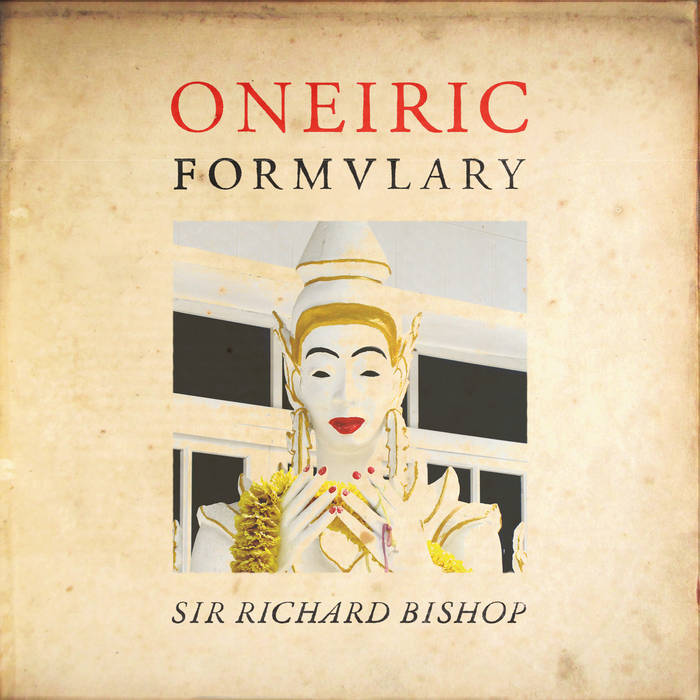 Oud, Lute, acoustic guitar, or lap steel guitar? While my musical knowledge is varied, my ear is not trained to pick out the many instruments used or mimicked by Bishop. He makes guitars sound like any of these aforementioned instruments, at any point in time, with practiced fingers and the equivalent musical knowledge of a library with every note he plays, a master guitarist proficient in a variety of guitar techniques and knowledge of music traditions. His latest album excels in his freer use of experimentation with theme and electronics, crafting a "dream pharmacy" as the title implies.
Oud, Lute, acoustic guitar, or lap steel guitar? While my musical knowledge is varied, my ear is not trained to pick out the many instruments used or mimicked by Bishop. He makes guitars sound like any of these aforementioned instruments, at any point in time, with practiced fingers and the equivalent musical knowledge of a library with every note he plays, a master guitarist proficient in a variety of guitar techniques and knowledge of music traditions. His latest album excels in his freer use of experimentation with theme and electronics, crafting a "dream pharmacy" as the title implies.
His previous releases have been focused on exploration of a particular genre. The Freak of Araby was a carefully crafted homage to late Egyptian guitarist Omar Khorshid, while the tracks on Tangier Sessions explored the sounds of a C. Bruno guitar from the 19th century that Bishop purchased in Morocco. For Oneiric Formulary, he further expands his already impressive repertoire of styles (Indian Raga, flamenco, surf, baroque, and many others) to craft an "oneiric" feel throughout. He takes turns adding unlikely sounds in the way of electronics that hum behind acoustic guitar, switching to near pop-embellished tunefulness, then leads the listener into nightmare visions in the very next track. Bits of drone experimentation are strewn throughout and unique synthesized sounds diverge from the usual guitar fare.
One such example of Bishop straying from his guitar is found on the opening tracks, "Call to Order." The shortest track of the batch, it kicks off the album with a mild nightmarish feel, or if you'd prefer, David Lynchian dreams, provided by an alien, synthesized theremin. "Celerity" goes back into more familiar territory and showcases Bishop's practiced dexterity, while "Mit's Linctus Codeine Co." sounds like an imaginary soundtrack to a film an alien cantina, or hold music at your local small town grocery store. "Renaissance Nod" is precisely that, a nod to what you might hear a minstrel playing at a Renaissance Faire. It isn't until "Graveyard Wanderers" that Bishop fully takes us into Tim Burton electronic territory, creating an auditory backdrop of rattling chains, dripping water and tortured souls, all of which may or may not have guitar as their original foundation.
"Dust Devils" is a catchy tune reminiscent of bagpipers in the Scottish highlands backed by tabla or djembe. The immediate standout track is "Enville," a pleasant acoustic track worthy of everyone's ears, one of his most melodic and memorable to date, that showcases his obviously practiced fingerpicking. "Black Sara" reminds me of a Spanish film. "The Coming of the Rats" is a wonderful interplay of electric and acoustic guitar, with acoustic guitar forming the baseline, and the electric guitar adding complexity, and seems to tell a story. Closing track "Vellum" concludes the album with a waltzy feel with scattered time signatures.
Dreams don't always make sense. They are not always logical, and can jump from storyline to storyline. Much is the same with this album, and Bishop is always mindful of the varied nature dreams can take. It is a journey of pleasant valleys, dangerous peaks and subterranean nightmares, all on the same album.
Read More
- Administrator
- Albums and Singles
 Creating memorable music is not always about throwing musical spaghetti at the wall to see what sticks; like any recipe, there are common ingredients to music’s magic—tempo, chorus and yes, a certain predictability—and the best dishes come from the extrapolation of the cook’s own prime ingredients into their own musical concoctions. Having a formula is no more dangerous to "real" music as a recipe is to a "real" chef; the best music in the hands of masters balances an adherence to these rules with free-flowing creativity, while those less experienced either know nothing about the recipe, or follow the recipe too strictly. Boston based trio E comprises all masters: guitarist Thalia Zedek (Come, Uzi, Live Skull), guitarist and inventor Jason Sidney Sanford (Neptune) and drummer Gavin McCarthy (Karate). Their third release doesn’t create any new formulas, but rather expounds on the tasty blend of the prior two releases, honing the skills of three masters into an even finer dish of practiced and precise dark energy.
Creating memorable music is not always about throwing musical spaghetti at the wall to see what sticks; like any recipe, there are common ingredients to music’s magic—tempo, chorus and yes, a certain predictability—and the best dishes come from the extrapolation of the cook’s own prime ingredients into their own musical concoctions. Having a formula is no more dangerous to "real" music as a recipe is to a "real" chef; the best music in the hands of masters balances an adherence to these rules with free-flowing creativity, while those less experienced either know nothing about the recipe, or follow the recipe too strictly. Boston based trio E comprises all masters: guitarist Thalia Zedek (Come, Uzi, Live Skull), guitarist and inventor Jason Sidney Sanford (Neptune) and drummer Gavin McCarthy (Karate). Their third release doesn’t create any new formulas, but rather expounds on the tasty blend of the prior two releases, honing the skills of three masters into an even finer dish of practiced and precise dark energy.
"Caught" initiates the recipe and the group bands together to deliver their formula of lots of crunchy chord structure right from the start; tight guitar interplay between Zedek and Sanford is marshaled by McCarthy’s furious rhythms. There is no bassist here, but it isn’t missed at all with Sanford’s handmade instruments filling in the gaps. Zedek, a legend in the alternative indie scene since the eighties, makes her weary and impassioned vocals present in the rallying cry "don't be silent, don't go quietly without a fight, there's no alibis - I wanna hear you." And there are plenty of reasons to fight here; ingredients include less than savory bacteria and virii, the flavor only salvaged by the promise of hope and a new future. "Acid Mantle" mockingly appeals to better living through science, asking the listener to "Anoint me with oils, inject me, complete me." "In the back of a lab, we engineer the germs, witness diagnosis man, I can confirm: it's contagious, spread it around" eerily echo current events in "Contagion Model," a model which seems to "synthesize, terrorize, dehumanize, normalize."
Like any good recipe, the resulting concoction will be rejected if not edible, and viral ingredients are offset by the sweet flavor of hope in "Sunrise" as Zedek urges the listener to "regenerate yourself again, start from the end and begin." In the midst of poisonous "Miasma," we are reminded that an open window, an analogy for pressure release, can work wonders: "Open a window, vapors are rising, miasma retreating, the patient reviving." Even "Gelding," the title referring to a castrated horse, can have a positive outcome in what some may view as a vicious act. In the act of castration, hormonally driven behavior is eliminated, allowing the animal to be more gentle, thereby experiencing "freedom at last in the absence of need." The fight is not unrecognized, and there’s inspiration to continue fighting. "Like a Leaf" addresses the struggle of feeling like you just want to let go, but encourages "take your time and you can set the tempo, if you fall into a heap." Yeah, they get it, the chorus knowingly reminding us that "sometimes along the way we break down, yeah...we all break down."
There is a saying that too many cooks spoil the broth, but for this recipe, each member takes equal turns, never overpowering each other and creating a balance of noise and warmth. No song is over four and a half minutes, allowing for a concise and masterful blend of loose aggression and technical skill. It is a recipe that has held true for two prior albums, full of melodic guitar lines, Zedek’s unique voice, McCarthy’s powerhouse drumming and Sanford’s musical ingenuity. The album is a powerhouse of honesty, a trait Zedek has been skillfully practicing for years, and she lets us in on her humanity in the closer "Apiaries Near Me" via the lyrics "I'm just trying to hold the tide, to draw the line."
I hear you. We hear you.
Read More

